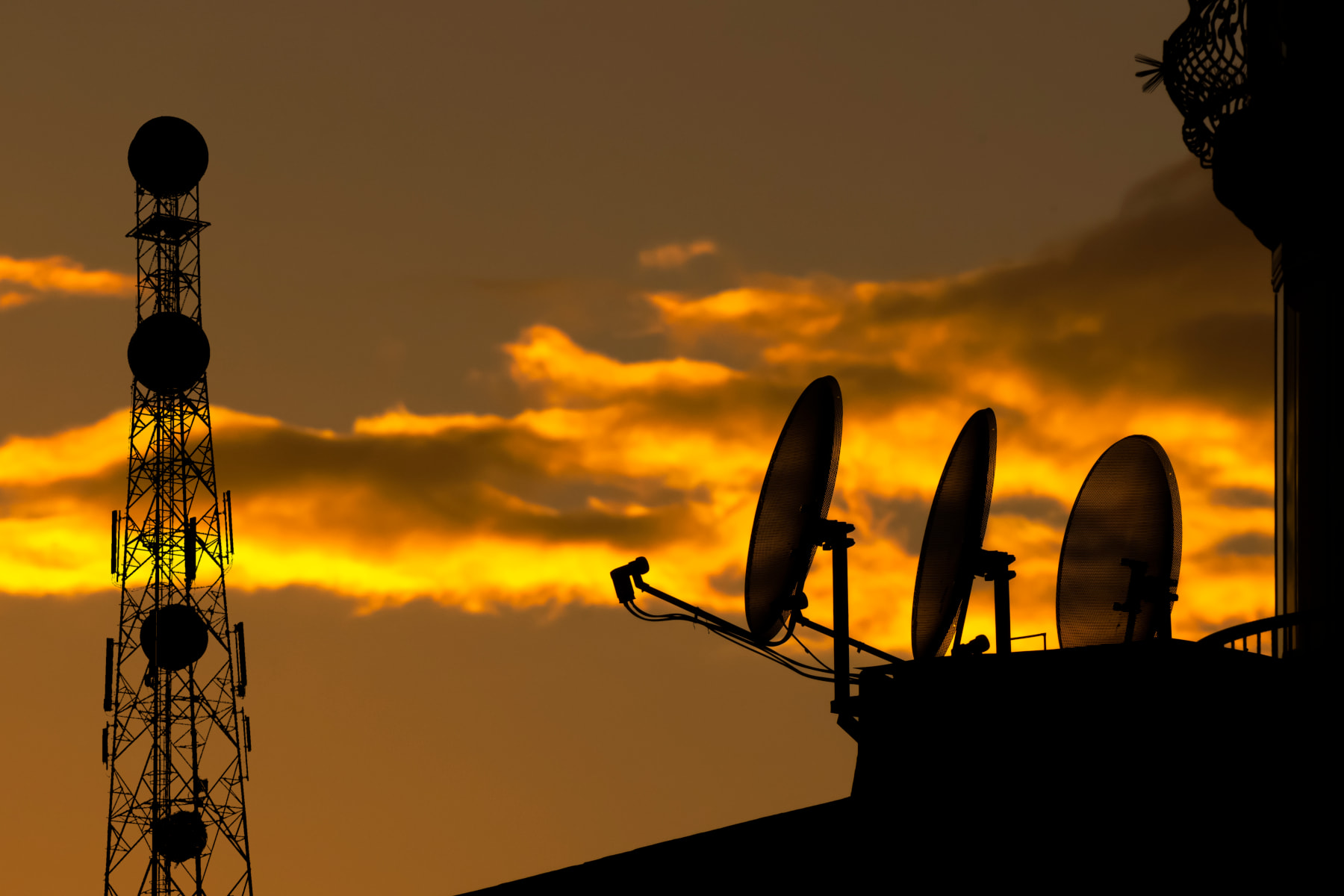AT&T Fiber Availability, Speeds, and More
Jun 29, 2023 | Share
Brand Guides
You can get a fiber internet plan from AT&T in 21 states, including California, Texas, and parts of the South and Midwest. It’s not available everywhere but you’re more likely to find it in major cities and towns.
Fiber internet is the fastest, most reliable type of internet you can get—and AT&T has some of the best fiber internet plans around. Prices start at $55 per month, while speeds range from 100 Mbps to 5,000 Gbps, giving you superb performance at a fair cost. And as a plus, you get unlimited data and don’t need to sign up for an annual contract.
But is AT&T fiber available in your area? That’s the big question on everybody’s minds these days, especially as AT&T recently discontinued its DSL service. We put together a guide below to answer common questions about AT&T’s fiber internet. Read on for details about pricing, speeds, and where you can get it.
To quickly find out whether you can get an AT&T fiber plan, just type in your zip code below to see if it’s available where you live.
Where can you get AT&T fiber internet?
AT&T’s fiber internet service is available in parts of 21 states, mostly in the Midwest and the South. Since it costs a lot to set up a fiber network, AT&T’s coverage is centered around cities and towns. (AT&T also has fixed-wireless internet for rural areas.)
AT&T fiber has been steadily expanding to more markets. At the start of 2023, the provider announced that it was adding fiber access to 9,000 locations in Greenville and Charleston, South Carolina. According to an older report from Fierce Telecom, the ISP has been focused building up more direct fiber access for customers who have it available in their neighborhoods and expanding access in residential buildings.
You can find out if AT&T fiber plans are available on your block by running a search with our zip check tool above.
Pro tip:
AT&T’s fiber internet offerings are excellent, but cable provider Xfinity has a lot wider availability. Take a look at our AT&T vs. Xfinity review to see how the two internet services compare.
Here are all the states where AT&T has fiber service. It’s available in most large cities and towns, but you’ll want to search your zip code to confirm whether you can get it.
- California
- Nevada
- Texas
- Oklahoma
- Kansas
- Missouri
- Ohio
- Kentucky
- Michigan
- Indiana
- Illinois
- Wisconsin
- Arkansas
- Louisiana
- Tennessee
- Mississippi
- Alabama
- Georgia
- Florida
- South Carolina
- North Carolina
Fiber is available to only about 40% of the US population, according to the Federal Communications Commission.1 So don’t be sad if you can’t get a fiber plan—it could be available at your house eventually. Keep checking to see if AT&T has expanded its network.
And watch for any construction on your block. If the orange-vested workers outside your window happen to be digging long trenches along the street, there’s a good chance that they’re installing fiber-optic cable into the ground. Woo-hoo!
AT&T availability map
You can also visit AT&T’s website to use its fiber internet availability map. It shows where customers can get fiber plans—just type in your address to see if you’re a lucky winner.
What are AT&T’s fiber plans?
| Plan | Price | Speed | Order online |
|---|---|---|---|
| Internet 300 | $55.00/mo. | 300 Mbps* | |
| Internet 500 | $65.00/mo. | 500 Mbps* | |
| 1G Internet | $80.00/mo. | 1,000 Mbps† | |
| 2G Internet | $110.00/mo. | 2,000 Mbps† | |
| 5G Internet | $180.00/mo. | 5,000 Mbps** |
*Price after $5/mo Autopay & Paperless bill discount (w/in 2 bills). Plus taxes & fees. Monthly State Cost Recovery Charge in TX, OH, NV applies. One time install chrg may apply. Ltd. avail/areas. Call or go to www.fiber.att.com to see if you qualify.
†Internet speed claims represent maximum network service capability speeds and based on wired connection to gateway. 1GIG speeds avail. to new customers with the latest router (“BGW320”) and recommended setup. For 5 GIG speed, single device wired speed maximum 4.7 Gbps. Actual customer speeds may vary based on a number of factors and are not guaranteed. For more information, go to www.att.com/speed101.
**Price after $5/mo Autopay & Paperless bill discount (w/in 2 bills). Plus taxes & fees. Monthly State Cost Recovery Charge in TX, OH, NV applies. Ltd. availability/areas.
AT&T’s fiber internet plans range in speed from 300 Mbps to 5,000 Mbps—the latter being the fastest internet plan available from a major provider in the entire country. The slowest package (though it’s not slow by any means) starts at $55 per month and the fastest one tops out at $180 per month.
You don’t have to sign up for a contract with AT&T Fiber, and you get unlimited data with your package. Renting a router to come with your Wi-Fi package costs an extra $10 per month, but you can save money by buying your own router. (We recommend a long-range router if you live in a big house or a gigabit router to get the most out of a 940 Mbps fiber plan.)
Pro tip:
Before you sign up for a plan, we recommend taking a quick look at our best internet deals guide to see if you can find a sweet deal on an AT&T fiber package.
Is AT&T fiber faster than regular internet?
| Internet type | Max download speed | Max upload speed |
|---|---|---|
| Fiber internet | 5,000 Mbps | 5,000 Mbps |
| Cable internet | 1,000 Mbps | 50 Mbps |
| DSL internet | 100 Mbps | 10 Mbps |
AT&T fiber internet is a lot faster than regular internet, capable of hitting speeds of 5,000 Mbps.
The most common types of internet you encounter are cable and DSL-type connections. Cable internet can hit download speeds of up to 1,000 Mbps, but it doesn’t have the symmetrical upload and download speeds of a fiber internet connection. DSL internet only reaches max speeds of around 100 Mbps, and often is much slower.
What makes AT&T fiber faster?
- Symmetrical upload and download speeds
- No electromagnetic interference with fiber-optic cabling
- Newer and better-maintained infrastructure
AT&T’s fastest fiber plan can hit speeds of 5,000 Mbps—five times as fast as the fastest cable internet plans. Honestly, most people don’t need a 5,000 Mbps internet plan. But it really goes to show the powerful capacity that AT&T’s fiber network has compared to more common and regular internet types.
AT&T’s cheapest fiber plan tops out at 300 Mbps speeds, which is way faster than what you get on DSL plans that cost the same price. It’s also a lot faster than most entry-level cable plans, since AT&T fiber can deliver 300 Mbps upload speeds in addition to download speeds. Having an internet speed of 300 Mbps gives you a solid speed to play online games, participate in Zoom meetings, post to social media, and stream video in HD on several devices.
You’ll want one of AT&T’s faster fiber plans if you live with a lot of roommates or family members and you’re all sharing the same Wi-Fi connection. Generally speaking, the more Wi-Fi devices you have in the house, the faster Wi-Fi you’ll need. Faster speeds are also necessary to support high-bandwidth internet activities and a lot of smart-home devices.
Advantages to gigabit internet:
- Upload gigabyte- or terabyte-sized files to cloud servers or YouTube
- Host livestreams
- Play multiplayer online games on 5 or more devices
- Regularly stream videos in 4K on 5 or more devices
Pro tip:
Fiber is incredibly fast, but fiber connections aren’t available everywhere. You may want to consider a cable internet plan as a backup, since it comes close to meeting fiber for speed and offers more availability. Read our AT&T vs. Spectrum review for more details.
What other internet providers have fiber plans?
| Plan | Price | Speed | Order online |
|---|---|---|---|
| Google Fiber | $70.00–$100.00/mo. | 1,000–2,000 Mbps | |
| Verizon Fios | $24.99–$94.99/mo. | 300–2,300 Mbps | |
| CenturyLink | $30.00- $70.00/mo. | 200- 940 Mbps | |
| EarthLink | $59.95–$185.95/mo. | 100–5,000 Mbps | View Plans |
Data as of 7/11/2022. Offers and availability may vary by location and are subject to change.
If you can’t get fiber Wi-Fi from AT&T, don’t worry. Google Fiber, Verizon, CenturyLink, EarthLink, and several other providers all offer fiber internet options.
Google Fiber is one of the best fiber providers in the country because it gives you extremely fast speeds at a flat rate. You don’t have to sign up for an annual contract, the router is included as part of your bill, and you get unlimited data to download and stream all you like.
Verizon Fios is another excellent option—like AT&T, it offers you a few different options to choose from based on speed and price. EarthLink is a bit more expensive, but it got excellent ratings for customer service, price, and overall performance in our annual customer satisfaction survey.
Type in your zip below and see if you can get fiber from AT&T or anyone else:
Sources
- Federal Communications Commission, “Compare Broadband Availability in Different Areas,” December 2019. Accessed February 9, 2021.
Author - Peter Holslin
Peter Holslin has more than a decade of experience working as a writer and freelance journalist. He graduated with a BA in liberal arts and journalism from New York City’s The New School University in 2008 and went on to contribute to publications like Rolling Stone, VICE, BuzzFeed, and countless others. At HighSpeedInternet.com, he focuses on covering 5G, nerding out about frequency bands and virtual RAN, and producing reviews on emerging services like 5G home internet. He also writes about internet providers and packages, hotspots, VPNs, and Wi-Fi troubleshooting.
Editor - Cara Haynes
Cara Haynes has been editing and writing in the digital space for seven years, and she's edited all things internet for HighSpeedInternet.com for five years. She graduated with a BA in English and a minor in editing from Brigham Young University. When she's not editing, she makes tech accessible through her freelance writing for brands like Pluralsight. She believes no one should feel lost in internet land and that a good internet connection significantly extends your life span.




